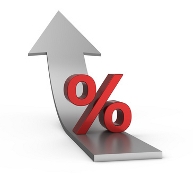 Recent negative economic trends have impacted virtually everyone in one way or another. Many people are looking for ways to decrease spending, but for vehicle owners, auto insurance is a necessary expense that unfortunately may only be increasing. An economy with rising health care costs, ballooning car costs, and a bad job market usually translates into higher coverage costs overall. If an insurer suffers greater-than-expected financial losses because of fluctuating prices in other industries and bad investment performance, these losses may be passed on to policyholders in the form of higher premiums. In addition, consumers’ eroding credit may push their individual costs upward.
Recent negative economic trends have impacted virtually everyone in one way or another. Many people are looking for ways to decrease spending, but for vehicle owners, auto insurance is a necessary expense that unfortunately may only be increasing. An economy with rising health care costs, ballooning car costs, and a bad job market usually translates into higher coverage costs overall. If an insurer suffers greater-than-expected financial losses because of fluctuating prices in other industries and bad investment performance, these losses may be passed on to policyholders in the form of higher premiums. In addition, consumers’ eroding credit may push their individual costs upward.
When an insured motorist is involved in an accident, an insurance company is usually the one that pays for vehicle repairs. And when the cost of cars goes up, the amount that those insurers have to pay for repairs also increases. Recent information gathered by TrueCar.com places the average transaction price for a new car in April 2012 at $30,303, up 4.2 percent from April 2011. Higher vehicle value and improved technology has made modern cars increasingly expensive to repair, resulting in greater losses for coverage providers when they have to pay out on individual claims. According to the Insurance Information Institute (III), the average cost of property damage, collision, and comprehensive claims went up 17 percent, 10 percent, and 28 percent, respectively, between 2000 and 2010.
Another trend that has impacted the price of vehicle coverage is the rising cost of health care. Automobile accidents often lead to bodily injuries, which are commonly covered by insurers. Unfortunately, the Centers for Medicare & Medicaid Services have found that national health expenditures reached over $2.5 trillion in 2010, nearly twice as high as the $1.3 trillion in expenditures in 2000. Of these expenditures, hospital care accounts for over $800 million. And according to the III, bodily injury claims rose a whopping 43 percent between 2000 and 2010.
The cause of skyrocketing health care costs and the resulting car insurance premium inflations remains a heavily debated subject. Some institutions, including the Kaiser Family Foundation, accredit these price increases to a combination of technology, prescription drug, and administrative costs which have all steadily increased in recent years. If emergency medical procedures and medication costs increase, it means that policy providers may lose revenue, and motorists are charged more to compensate for this economic loss.
Apart from changes within the insurance industry, lifestyle changes for individual motorists can also lead to higher premiums in an economic slump. When times are tough, many people are forced to turn to credit cards to cover their expenses. When drivers begin to borrow excessively, their credit scores begin to drop. In states where credit scoring is a common rating practice, a poor financial history could easily translate into a higher priced policy.
To counter the rising price of coverage, one of the best actions that a motorist can take is to shop around to find one of the top insurance companies that are willing to provide adequately priced protection. Although there isn’t much that a motorist can do to impact industrywide changes, drivers are still capable of exploring all of their options to find cheaper alternatives.
Source: http://www.onlineautoinsurance.com/companies/ratings/